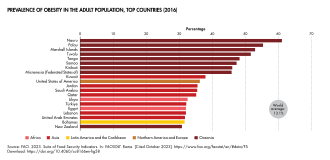Expenditure on health in Samoa was 7.2% of GDP in 2014, US$418 per capita.
Contents
Life expectancy at birth was estimated at 72 years for men in 2016 and 78 for women. [1]

The Human Rights Measurement Initiative [2] finds that Samoa is fulfilling 75.5% of what it should be fulfilling for the right to health based on its level of income. [3] When looking at the right to health with respect to children, Samoa achieves 98.7% of what is expected based on its current income. [3] In regards to the right to health amongst the adult population, the country achieves 95.4% of what is expected based on the nation's level of income. [3] Samoa falls into the "very bad" category when evaluating the right to reproductive health because the nation is fulfilling only 32.4% of what the nation is expected to achieve based on the resources (income) it has available. [3]